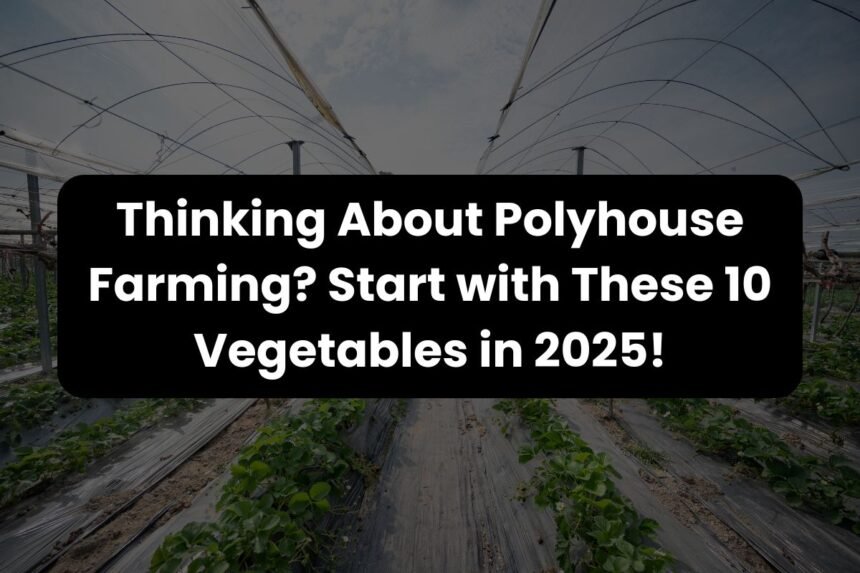Look, I’ll be honest with you – polyhouse farming is no longer just some fancy thing that only big farmers with loads of money can do. It’s become super practical and profitable for farmers across India, from Punjab to Karnataka. I’ve seen farmers earning lakhs from small polyhouse farming, and today I want to talk about the vegetables that are really making a difference.
- 1. Red-Yellow Capsicum (Bell Peppers)
- 2. Tomatoes
- 3. Cucumber
- 4. Lettuce and Other Leafy Greens
- 5. Brinjal (Eggplant)
- 6. Green Chilies
- 7. Bottle Gourd (Lauki) and Ridge Gourd (Turai)
- 8. Beans – French Beans and Cluster Beans
- 9. Zucchini and Other Exotic Vegetables
- 10. Bitter Gourd (Karela)
- Few Important Points Before You Start Polyhouse Farming
- Why Choose Polyhouse Farming?
If you’re thinking about starting a polyhouse farming or already have one and wondering what to grow, this is exactly what you need. Let me share the ten best vegetables that are proving to be game changers in 2025.
1. Red-Yellow Capsicum (Bell Peppers)
Let me start with the superstar of polyhouse farming that is Colored Capsicum. This isn’t your regular green capsicum from the local market. I’m talking about those beautiful red, yellow, and orange bell peppers that you see in supermarkets at Rs 200-300 per kg.
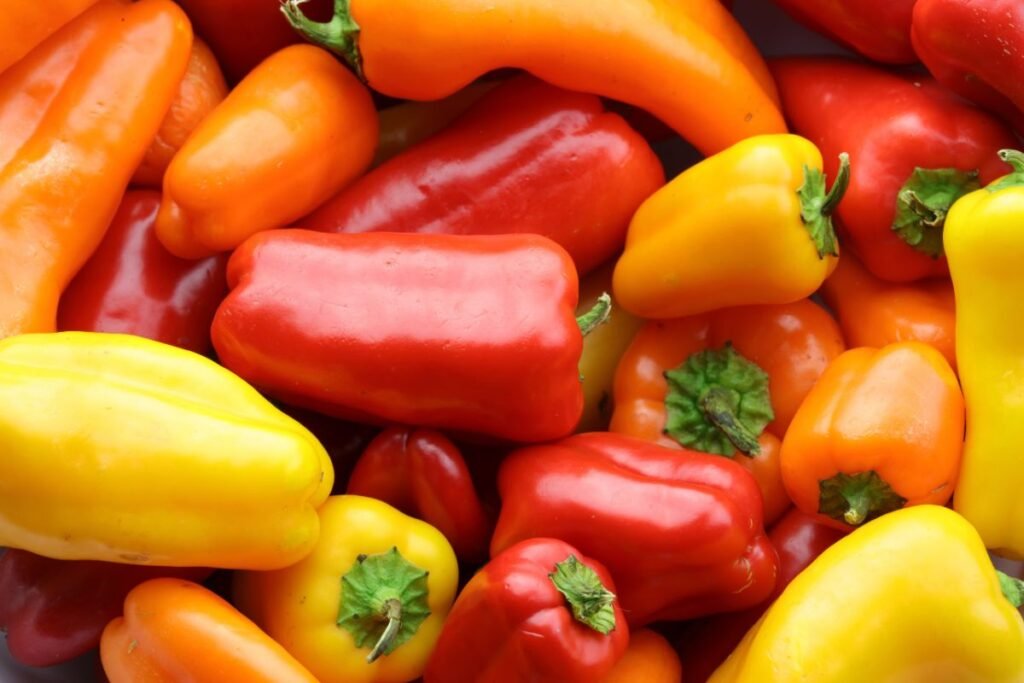
Why is everyone crazy about growing capsicum in polyhouse farming? Simple, the profits are insane. Where open field farming gives you maybe 10-20 tons per acre, polyhouse capsicum can give you 30-40 tons! That’s double or even triple the yield.
The best part? These colorful beauties need controlled conditions, which is exactly what a polyhouse farming provides. You can grow them round the year, and the off-season prices? They go through the roof! Many farmers are making Rs 25-35 lakhs per acre annually with capsicum.
One thing though – capsicum needs proper temperature (between 20-30°C) and doesn’t like too much water. But in a polyhouse farming, you control everything, so it becomes much easier.
2. Tomatoes
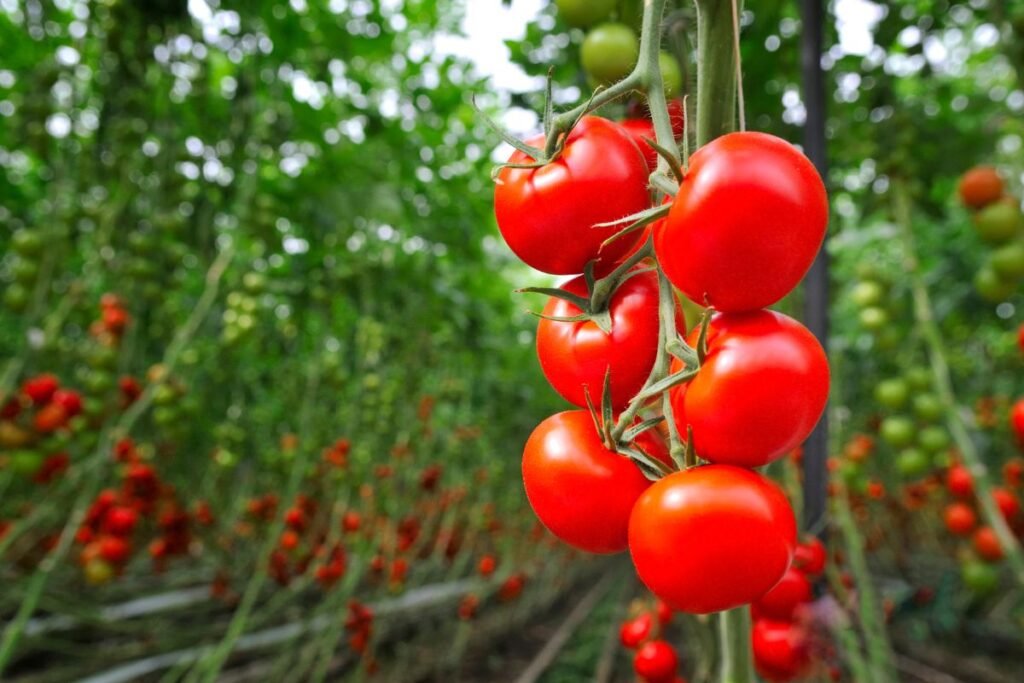
Tomatoes might sound boring compared to exotic capsicum, but hear me out. Polyhouse tomatoes are a completely different ballgame from field tomatoes. The quality, size, and shelf life are far superior.
The market for good quality tomatoes is huge in India. Hotels, restaurants, and now even regular households prefer polyhouse tomatoes because they look better and last longer. You can expect around 40-60 tons per acre in a polyhouse farming compared to maybe 25-30 tons in open fields.
What I like about tomatoes is that they’re easier to sell. Everyone buys tomatoes, right? You don’t need to hunt for fancy supermarkets or export opportunities. Your local market itself will take them if the quality is good.
Plus, tomatoes grow vertically in polyhouses, which means you’re using your space really efficiently. The plants can grow up to 8-10 feet, and you keep harvesting for months.
3. Cucumber
Cucumbers are perfect if you want quick results. They start giving harvest within 45-50 days, which means faster cash flow. In polyhouses, you can easily get 3-4 crops in a year.
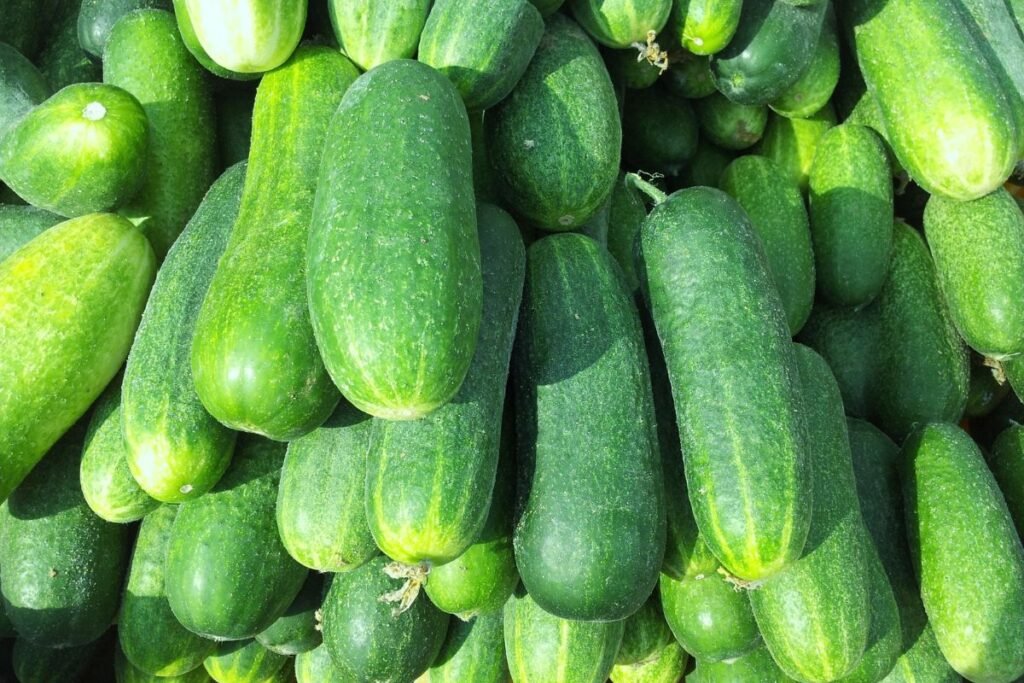
The yield difference is massive open field cucumber might give you 160-170 quintals per acre, but polyhouse cucumber can give you 340-350 quintals! That’s more than double.
Hotels and restaurants love polyhouse cucumbers because they’re uniform in size and quality. Nobody wants those fat, seedy cucumbers that taste bitter. Polyhouse cucumbers are always tender, crisp, and perfect.
The profit margins are excellent too. With proper care, farmers are making Rs 15-20 lakhs per acre annually from cucumber farming in polyhouses.
4. Lettuce and Other Leafy Greens
Now this is where things get interesting for urban market farmers. Lettuce, along with exotic leafy greens like kale, spinach, and different varieties of salad leaves, are in huge demand in metros.
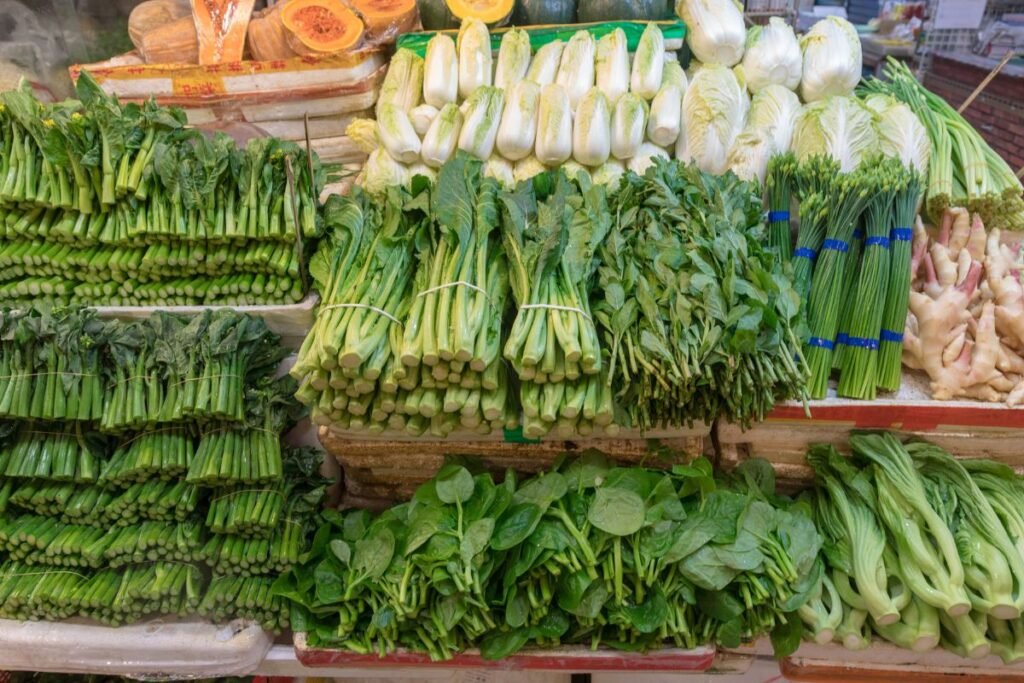
Five years ago, most Indians didn’t even know what lettuce was. Now? Every cafe, every health conscious person, every salad bar needs it. And guess what it grows beautifully in polyhouse farming.
Lettuce doesn’t need too much heat, which makes it perfect for polyhouses with good ventilation. You can harvest it within 30-40 days, and the best part you can do multiple plantings throughout the year.
Urban farming and organic produce are big trends in 2025, and leafy greens are riding that wave. If you’re near a city, this could be your goldmine.
5. Brinjal (Eggplant)
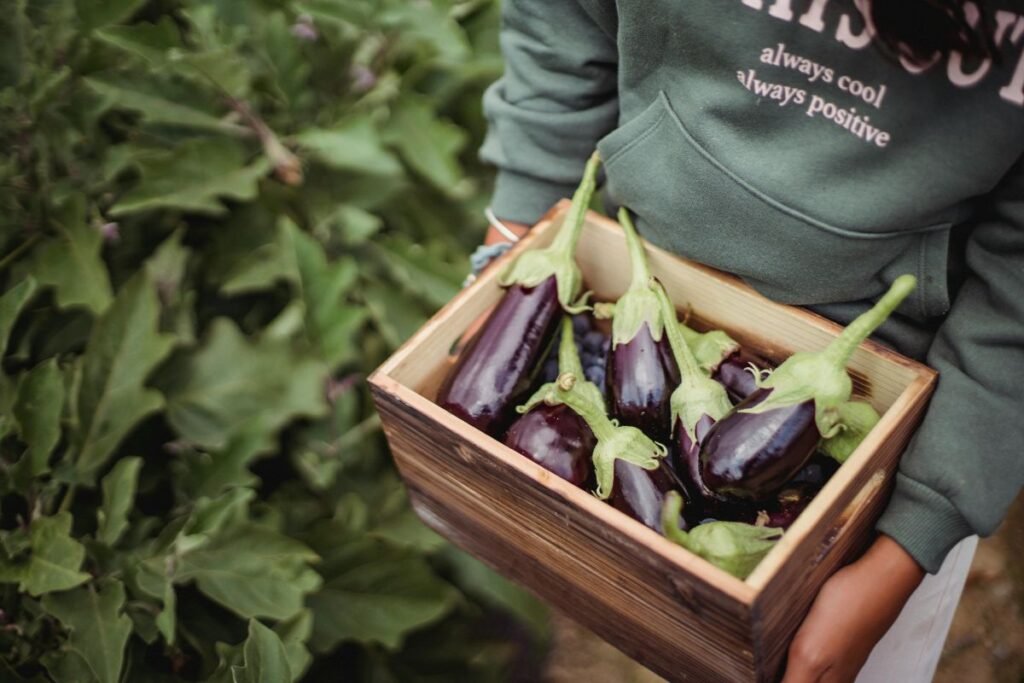
Brinjal might not sound as exciting as bell peppers, but it’s a vegetable that Indians eat regularly. The market is always there, and polyhouse brinjal quality is way better than field grown ones.
In a polyhouse, you get longer, prettier brinjals with better shine and no pest damage. This means better prices. While regular brinjal might sell for Rs 20-30 per kg, good polyhouse brinjal can get Rs 40-60 per kg in the market.
The yield is also impressive – you can expect 30-40 tons per acre in a well-managed polyhouse. Brinjal plants keep producing for 4-5 months continuously, giving you steady income throughout the season.
6. Green Chilies
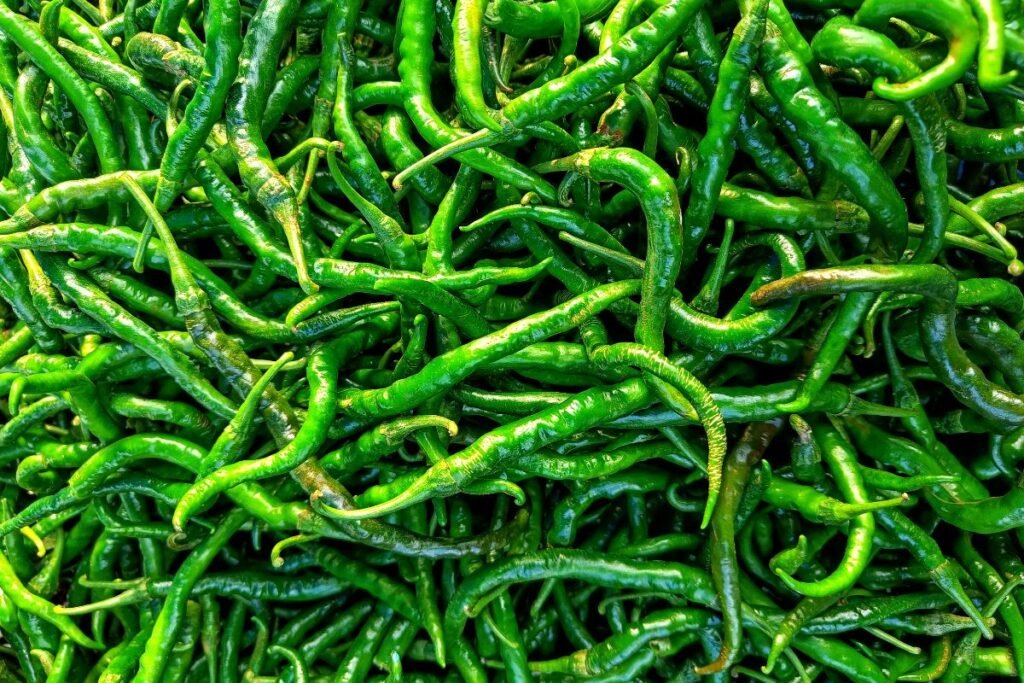
Don’t underestimate green chilies. In Indian cooking, they’re essential, and the market never goes down. What makes polyhouse chili farming attractive is the consistent quality and year round production.
During off-season, when field production is low, polyhouse chilies can fetch really good prices – sometimes Rs 80-100 per kg wholesale. Even in normal season, you get better rates because of superior quality.
Chilies are also relatively easy to manage in polyhouses. They don’t need as much pampering as capsicum or tomatoes. Plus, you can grow them alongside other crops as companion planting, maximizing your polyhouse space.
7. Bottle Gourd (Lauki) and Ridge Gourd (Turai)
These traditional Indian vegetables do surprisingly well in polyhouses. Many farmers ignore them thinking they’re low value crops, but that’s a mistake.
In polyhouses, these gourds give amazing yields and the quality is top notch. Long, straight bottle gourds and tender ridge gourds always get premium prices. You can get 40-50 tons per acre easily.
The advantage is that these vegetables have a huge market in India. Every household buys them, so you’re never stuck with unsold produce. Plus, they’re easier to grow compared to some other crops, making them good for beginners.
8. Beans – French Beans and Cluster Beans
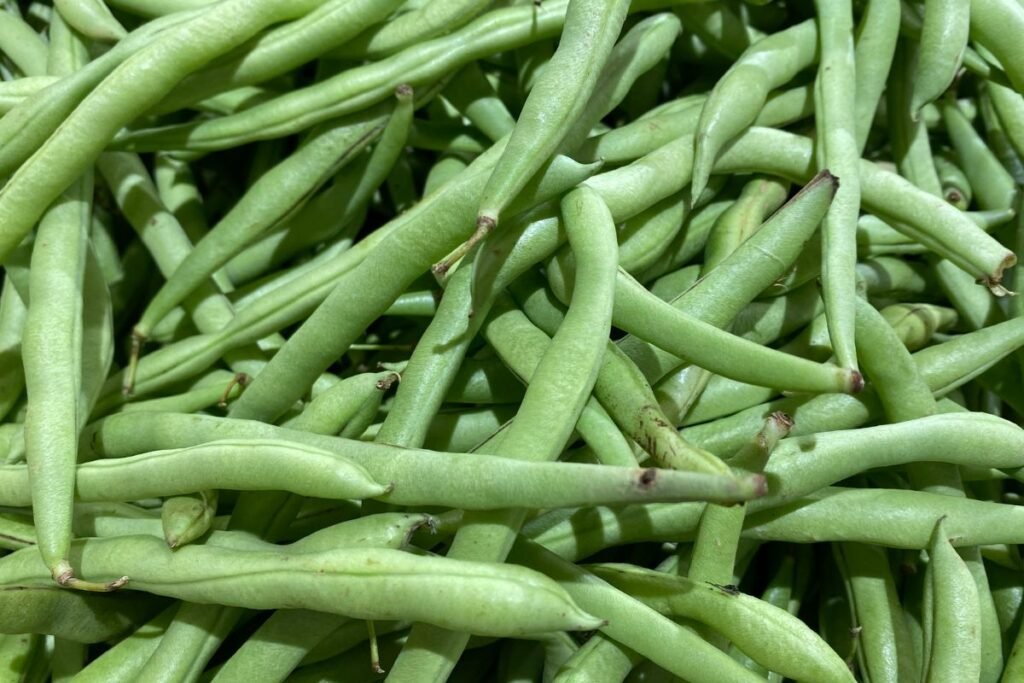
Beans are another crop that performs brilliantly in controlled polyhouse conditions. French beans especially are in high demand in urban markets and for export purposes.
In a polyhouse, you get long, tender, string free beans that look perfect. The color is bright green, and they stay fresh longer. This means better market price – sometimes double what you’d get for field grown beans.
Beans are also good nitrogen fixers, which means they actually improve your soil quality. Many smart farmers grow beans between their main crops as a rotation crop.
9. Zucchini and Other Exotic Vegetables
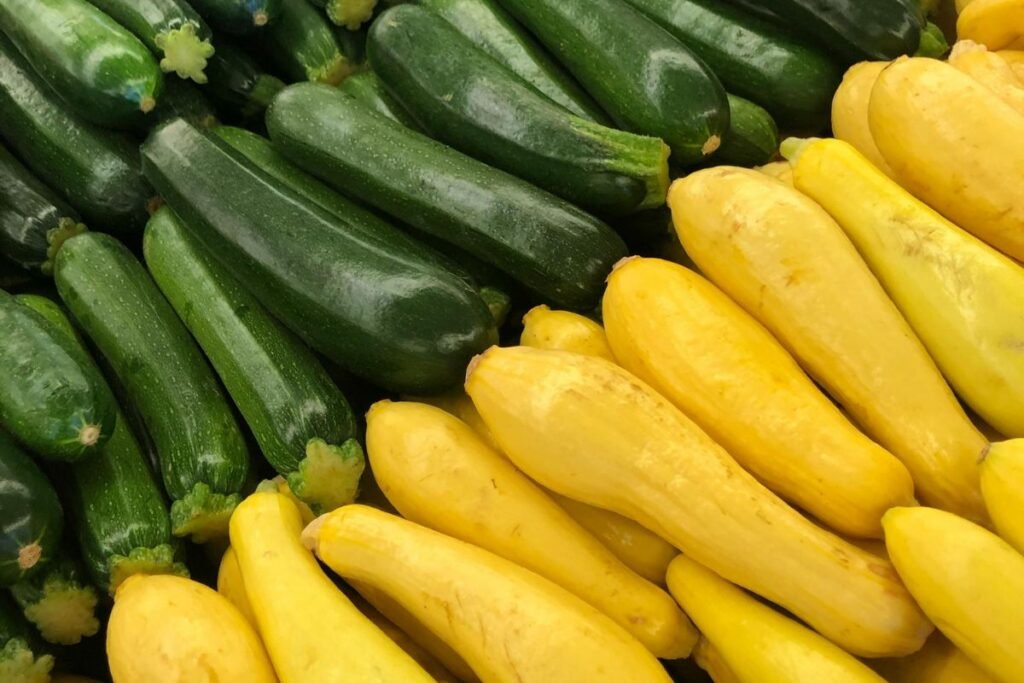
This is for farmers who want to target the premium market. Vegetables like zucchini, cherry tomatoes, colored carrots, and baby corn are becoming popular in Indian metros.
These exotic vegetables command crazy prices – zucchini can sell for Rs 100-150 per kg in good markets. The problem with growing them in open fields is that the climate isn’t always suitable and pest control is difficult.
Polyhouses solve both problems. You can create the perfect environment for these vegetables and grow them year round. If you have access to supermarkets, organic stores, or export markets, this is where the real money is.
10. Bitter Gourd (Karela)
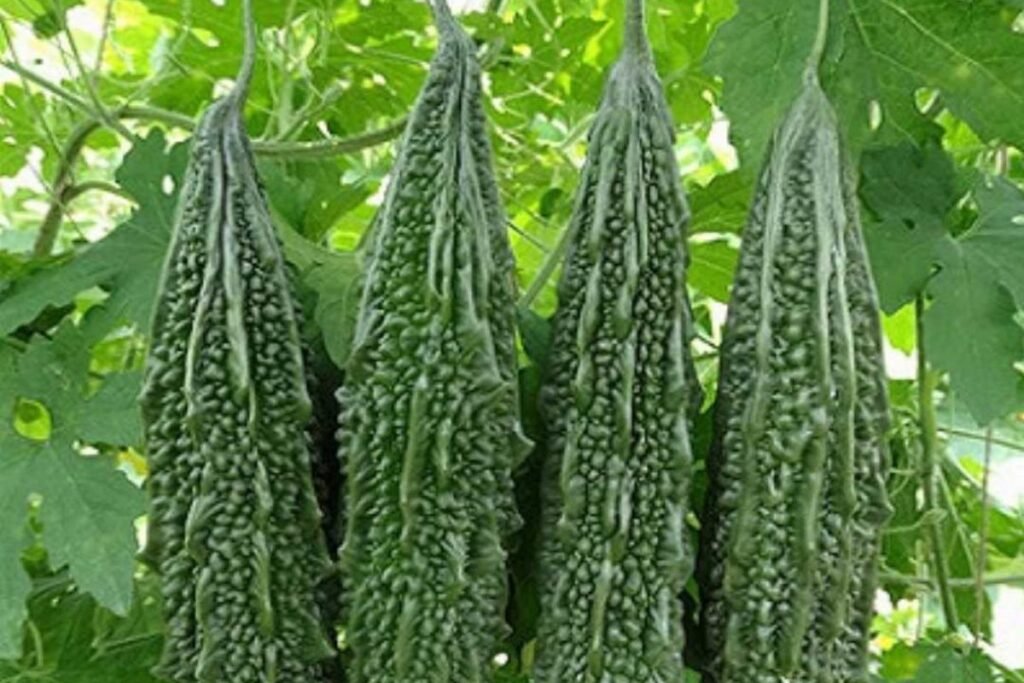
Last but not least, bitter gourd. I know, I know – not everyone loves karela, but the health conscious market is growing fast in India. Diabetic patients, fitness enthusiasts, and health food lovers are regular buyers.
Polyhouse bitter gourd is way better than field grown ones. They’re less bitter, more uniform in size, and the skin is tender. This makes them easier to sell, even to people who usually avoid karela.
The yields are good too – around 25-30 tons per acre, and since it’s a continuous harvesting crop, you get steady income for months. The plant keeps producing for 3-4 months easily.
Few Important Points Before You Start Polyhouse Farming
Before you jump into polyhouse farming with all these vegetables, let me share some real talk:
Choose according to your market: There’s no point growing exotic zucchini if your local market doesn’t even know what it is. Know your buyers before you plant.
Start small: Don’t invest your entire savings in a huge polyhouse growing five different vegetables. Start with one or two crops, learn the process, and then expand.
Water and nutrients matter: Polyhouses need drip irrigation and proper fertigation systems. You can’t just water plants randomly like in fields.
Temperature control is crucial: Different vegetables need different temperatures. Make sure your polyhouse has proper ventilation, shade nets, and cooling systems if needed.
Pest management: Yes, polyhouses reduce pests, but they don’t eliminate them. Regular monitoring and organic pest control are essential.
Get training: Join a government program or learn from experienced polyhouse farmers. The initial learning curve can be steep, and good guidance saves money.
Why Choose Polyhouse Farming?
Polyhouse farming in 2025 is not about doing traditional farming under a plastic sheet. It’s about smart agriculture – using technology and controlled conditions to grow high-value crops efficiently.
The vegetables I’ve listed above are tried and tested by farmers across India. Some are making lakhs every month from just one acre of polyhouse. But remember, success doesn’t come overnight. It needs proper planning, continuous learning, and hard work.
Start with what suits your region and market. Keep your quality high, maintain consistency, and build relationships with buyers. The market for good quality vegetables is only growing in India, and polyhouse farming puts you in the perfect position to tap into it.
The government is also supporting polyhouse farming with subsidies – you can get 50-85% subsidy depending on your state and category. So the initial investment isn’t as scary as it sounds.
If you’re serious about farming as a business and not just as tradition, polyhouse farming is definitely worth considering. These ten vegetables are your best bet for good returns in 2025. Pick your crop, set up your polyhouse, and get growing!

